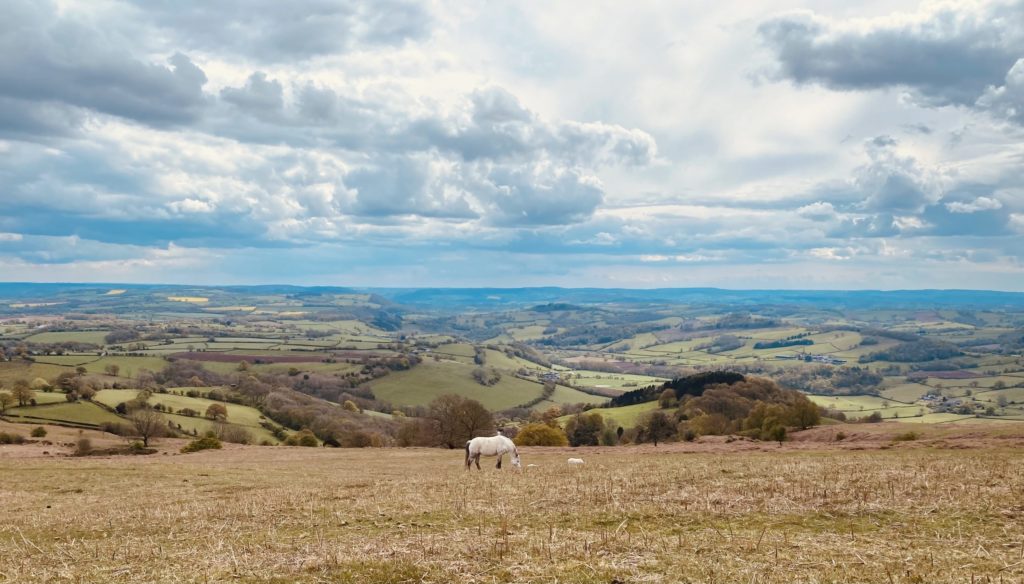
Herefordshire: Britain’s forgotten room?
In walking and talking with people in the course of writing my new book, New Roots, Ancient Lands: Walking Through Herefordshire’s History, I saw a lot of grand country houses and castles in various states of repair and it struck me that if Britain itself was a vast sprawling mansion, then Herefordshire is just one of its rooms – one that not many of the inhabitants remembers, or that visitors rarely stumble across.
Everyone can find Scotland on a map, right up at the top like an attic, or point to Oxfordshire right in the middle like a dining room, because of its famous university and proximity to the social-media-friendly Cotswolds, but Herefordshire is more of a surprise, like an enclosed library of wonders tucked away down a little-used hallway.
Herefordshire is truly a hidden gem. Not only is it full of incredible natural sights but its many unique historical sites offer an opportunity to better understand our entire nation’s history.

My exploration began amongst the county’s unique Ice Age ponds, where mammoths once walked, which are found here in Herefordshire in greater numbers than anywhere else. I strolled along the prehistoric ridge of Dorstone Hill, where the Hall of the Dead, Arthur’s Stone and Herefordshire’s first stone circle stand, uncovered by recent archaeological digs and which are in parts 1,000 years older than Stonehenge. I climbed numerous hillforts, where Iron Age people gathered and later fought the Romans, the first wave of invaders.
Later, I walked with Vikings to the site of the Herefordshire Hoard, with its ‘Two Emperor’ coins, and on to the pre-Norman Richard’s Castle. Did you know that Herefordshire had the highest number of Normans before 1066 than any other place in England? Then there is Snodhill Castle, the newly ‘discovered missing link’ in the great Marcher defensive line, and Kilpeck – site of not just a castle but also Britain’s most extraordinary decorative church, a riotous celebration of life carved in stone.
Of course, the county is renowned for its apple orchards. However, it was only whilst walking with cider maker Tom Oliver that I was introduced to Lord Scudamore, who valiantly tried to challenge the dominance of the French wine lobby in the 17th century with his sparkling cider. I also explored Herefordshire’s rich red earth – coloured just like its famous cattle – alongside farmers, travelled along the Black and White villages trail and looked for its lost canal, and returned numerous times to wander by what is possibly Britain’s favourite river, the iconic River Wye. Eventually my walks ended up in the 20th century, as rebellious Suffragettes fought for equality and ‘Canary Girls’ risked their lives to help supply the war effort. As well as being a history buff, I’m a birdwatcher, wildlife enthusiast and a songwriter. Inspired by the county’s stunning landscape, and its myths and legends about dragons, witches and faeries, I penned new folk songs about my journey, and what makes a person rooted to a place. After a year or more walking and talking, I can confidently say everything is here, in Herefordshire, in a room that offers us a window into the history of Great Britain. All we have to do is climb the stairs, open the door, listen and learn, enveloped in a world of natural wonders and incredible historical discoveries. I’m proud to call this ancient land home.
New Roots, Ancient Lands: Walking Through Herefordshire’s History
Joseph Emmett
£15.00
978-190-3360-576